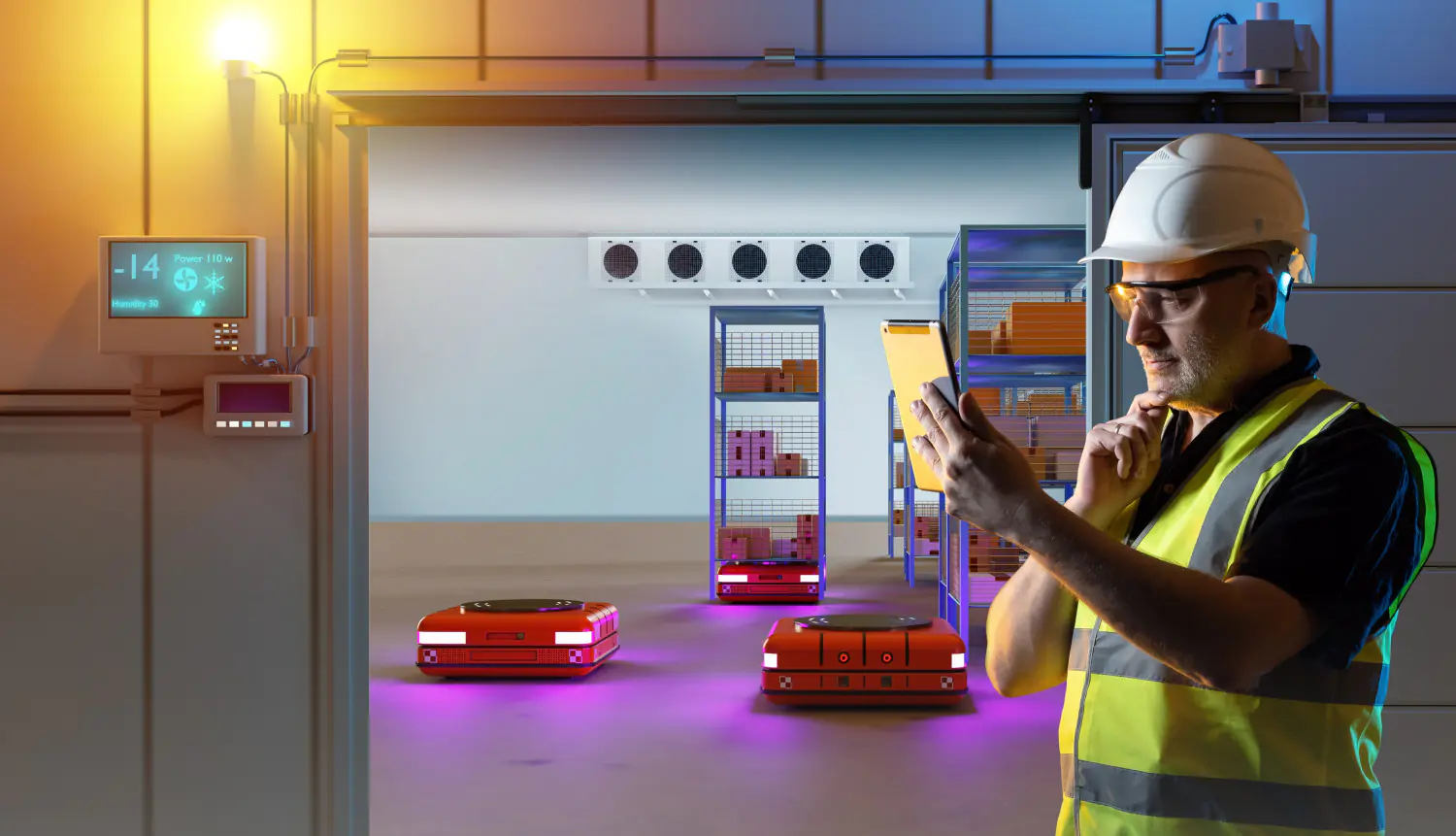Keeping it Cool: Unveiling the Future of Deep-Freeze Automation
24.07.2024

Introduction
In the fast-paced world of cold chain logistics, there exists a relentless pursuit of efficiency. Navigating tight margins, ensuring food safety through meticulous temperature control, and striving for a seamless customer experience – all while operating in a literal deep freeze. Automation beckons as a potential game-changer, promising increased throughput, reduced labor costs, and a safer work environment for teams braving the sub-zero temperatures. However, implementing automated material handling in this frigid frontier presents a unique set of obstacles.
The Chilling Reality of Deep-Freeze Automation
The extreme temperatures within deep-freeze warehouses, typically ranging from -20°F to -40°F (-29°C to -40°C), pose a significant challenge. Conventional equipment components simply aren't designed for such harsh conditions. Imagine forklifts with sluggish hydraulics, batteries draining at an alarming rate, and delicate sensors rendered inoperable by the extreme cold. These issues not only impact performance but also inflate upfront costs due to the need for specialized, cold-resistant equipment.
Additionally, material handling innovation is not advancing at the same rates in cold storage as in standard applications, . While newer technologies such as AGVs and AMRs are making serious leaps in adoption in ambient temperature storage facilities, adapting these for cold storage has not seen a broad availability in the market yet
The need for high density to minimize the cubic space that needs to be kept cold further complicate matters. Traditional automation solutions like ASRS warehouses operated by stacker cranes, shuttle systems, and pallet and case conveyance have long been adapted for deep-freeze environments by a good amount of equipment providers to choose from. Unfortunately, not all companies that handle frozen goods have the scale necessary for a financial payback of these capex intensive solutions. This becomes even more restrictive in a brown field environments with standard warehouse height of 45ft or less and existing racking. Simply replacing manual forklifts with automated vehicles would be a handy solution. However, the constant battle to maintain frigid temperatures within the warehouse inevitably leads to condensation and ice buildup. This can wreak havoc on sensor functionality, damage equipment tracks, impair the functioning of vison systems and create safety hazards.
Especially critical are transitions of temperature zones. Typically frozen products are stored in deep freeze ambience, but inbound and outbound staging happens in refrigerated pre-chambers or dock areas. If AGVs are only prepared for a narrow temperature range then solutions like conveyor pass-throughs are required in addition to the mobile equipment taking away part of the automation savings and valuable space.
We can’t overlook the rising costs of energy in this equation, either. To build a greenfield cold storage facility - or retrofit an existing one – requires significant attention to be paid on the financial investment to provide sufficient utilities, but also in the building fabrication to effectively maintain the frigid environment.
One would think that such a specialized need would be a strategic opportunity for 3PLs to capitalize on, but unfortunately this doesn’t necessarily work in reality. The volume of frozen storage needed is small enough in comparison to other ambient or even just refrigerated storage that facilities would need to be very strategically placed in order to maintain temperatures during transport. Space in these few and far between specialized facilities is hard to come by, and is therefore only available at a premium price, often not feasible for smaller companies.
Breaking the Ice: Trends for a Warmer Future
Despite these challenges, the future of deep-freeze material handling is undeniably automated. Innovative technologies are paving the way:
Specialized Equipment Manufacturers
The industry is starting to pick up in cold-adapted robots, conveyor systems, and automated storage systems specifically designed to thrive in sub-zero environments. These machines boast specialized lubricants, insulated components, and advanced thermal management systems, ensuring reliable performance even in the most extreme conditions.
Wireless Communication
Replacing cables with Wi-Fi or RFID technology eliminates the risk of damage from frozen condensation. This not only improves data transmission reliability but also enhances flexibility by reducing our reliance on fixed infrastructure within the warehouse.
Software Interoperability
Most vendors of automation, especially the ones focusing on innovation and niche solutions have already realized that the mere capability to communicate with a host system and send communications up and down is not enough. Instead autonomously moving equipment also needs to be able to coexist and autonomously interact with other pieces of automation for a truly streamlined material flow.
Industry Collaboration
As the market has seen in other areas of logistics, sharing the burden of cost can make good business sense, even if it means paring up with what would ordinarily be considered the competition. When there is an increased need from multiple potential companies with similar products willing to share space, 3PLs can utilize economies of scale to justify investment into building more temperature-controlled facilities.
The Road Ahead: A Frigid Frontier Beckons
While challenges remain, the potential benefits of deep-freeze automation are too significant to ignore. By carefully considering the specific demands of our environment, embracing innovative technologies, and doing a thorough analysis of applicable options - which can range from brownfield to greenfield automation, outsourcing or collaboration - we can navigate the path towards a more efficient, cost-effective, and most importantly, a safer future for our frozen food operations. After all, a well-automated deep-freeze warehouse is no longer a futuristic vision, but a key ingredient for success in the competitive world of frozen supply chains.
Author

